Best VR headsets in 2024: experience the future today with these top picks
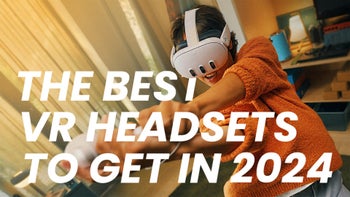
What are the best VR, AR or MR headsets that you can get in 2024? A very valid question! After all, it feels like XR — the term used to combine all three of those categories — has entered a sort of renaissance.
But here's the deal: finding the right XR headset for you means figuring out what you're hoping to get out of the experience. After all, not all headsets are the same, yet even if some of those are more powerful, that doesn't necessarily make them the better choice.
Here's a quick example: the Vision Pro is an amazing product. But if you're not a productivity freak, already knees deep in the Apple ecosystem, then it's probably not the right fit for you. But if you want to get a taste of high-class MR, the Quest 3 can still let you do that. See what I mean?
But even at that: there's loads more to consider, especially if you're aiming at trying VR on a tighter budget. Best part? You can totally do that now, thanks to great offerings like the Quest 2 or the Pico 4.
We've done our part in collecting the most impressive VR headsets worth your time in 2024 and presenting them here, on this page. Now it's your turn: browse, pick and let us know in the comments which one you went with and why.
The best VR headsets to get in 2024:
- Meta Quest 3 — the best all-around headset in 2024
- Apple Vision Pro — a flawed, but unrivaled XR experience
- Meta Quest 2 — the best budget-friendly headset
- Valve Index — a fan favorite that is starting to show its age
- Pico 4 — the best headset for playing PC VR games on a budget
- Pimax Crystal — the best VR headset for immersive simulators
- FAQ — things to consider when omitting to a purchase
Meta Quest 3
great for beginners and pros alike

- Starting price: $499
- IPD range: 58-71 mm
- Refresh rate: 90-120 Hz
- Weight (headset only): 512gr (1.12 lbs)
We can simplify the situation with the Quest 3 in a very neat way: if you can afford it, then get it. But if you've already found a very solid deal for the Quest 2 (or are already a proud owner of one), then weather you should get one really depends on what you're hoping to get out of the Quest 3.
Naturally, with the Quest 3 being equipped with Qualcomm's latest chip, specialized for AR and VR, it's a total powerhouse. Not only that, but the headset is capable of tracking your entire body without any sort of extra trackers and then estimating your legs' position based on that data.
With this being a sequel to one of the most popular VR headsets ever made, you are probably expecting improvements in image quality and comfort, and yes: those are absolutely present. Not only that, but the Quest 3 supports passthrough in color with actual AR capabilities (even though those will be dropping later on).
The Quest 3 is also — as of January, 2024 — the only commercially available VR headset that can offer you a proper taste of mixed-reality. If you're excited to check out the best that XR has to offer, then the choice is pretty clear.
Apple Vision Pro
here to show you how UX for XR should be done

- Starting price: $3,499
- IPD range: 51-75 mm
- Refresh rate: 90 Hz
- Weight (headset only): 650 g (1.43 lbs)
We've said it before and we'll say it again: the Vision Pro is certainly not suited for everyone. But if you're that one person that could take full advantage of it's capabilities, then you're going to absolutely love it.
Alternatively, you may be a developer with a gaze set towards the horizon, which is also a very valid reason to get a Vision Pro. After all, most signs point towards XR becoming way, way more important to the tech landscape in the next decade, so that only makes sense.
But if you're in it for gaming and entertainment, then this is probably not the best pick for you. That said, it is really difficult to not become impressed by Apple's first spatial computer. Even if it's not for you, if you get a chance to try it: don't pass it up.
Meta Quest 2
the budget-friendly king of VR

- Starting price: $399
- IPD range: 56-70 mm
- Refresh rate: 60-120 Hz
- Weight (headset only): 501 g (1.10 lbs)
The Meta Quest 2 (formerly Oculus Quest 2) is a fan favorite, for a very good reason. When it came out, it felt like it redefined what VR was all about, with it offering a slew of — now seemingly essential — features at a really competitive price.
Sure, the times? They are a-changin', but that doesn't mean that the Quest 2 is obsolete in 2024. In fact, if you're just starting out with VR, this is the best headset to pick up. Why? Well, let's make it simple:
- You can use it like a console and play with it as is, in standalone mode
- You can attach it to a PC and gain access to PC VR content too
- You don't need a bachelor's degree in VR technology to set it up or enjoy it
- It still gives you that initial "wow factor" when turning it on for the first time
- Oh, and Meta is totally still supporting it software-wise
Now, all that being said: the world has moved on and you're bound to notice. For example, the Quest 2's live feed is really grainy and limited to black and white, which makes mixed-reality content impossible to enjoy and you won't be impressed by the screens if you've ever tried another headset, equipped with something more modern.
But hey: the Quest 2 blew up for a reason and then stays at the #1 spot practically to this day. Sure, the Quest 3 is likely to dethrone it. But it takes a lot for that to happen. Now that the Quest 2's cost is lower than ever, it makes more sense than ever to start your VR journey here.
Valve Index
the original PC VR beast

- Starting price: $999
- IPD range: 58-70 mm
- Refresh rate: 120 Hz
- Weight (headset only): 809 g (1.78 lbs)
Sure, you may have heard of Valve as the company behind Steam, or even as the team behind hit FPS game series Half-Life. But did you know that the company also makes hardware? Well, you should. Because Valve's expertise isn't limited to software.
Here's how Valve rolls: the company picks a concept and then moves on to prove it, through and through. So it wanted to make the best, platform-defining VR game? Well, that took making a proper VR headset, capable of making said game run great too. That's about it, really.
But that does also mean that the Valve Index is a PC VR headset, exclusively. No standalone mode here, folks! And, just in case you're not quite sure what that means: it means that having a beefy PC isn't just recommended, but mandatory.
Valve's GPU recommendations start at NVIDIA GeForce GTX 970 and above, or AMD RX480 and above, which isn't that hard to match nowadays, but it is still a separate purchase. If you're planning on using a different model, make sure that it includes a DisplayPort, because that's mandatory with the Valve Index. Not only that, but set up is a bit more involved too, requiring for additional, external trackers to be placed in the process.
So what can you expect to get out of such a transaction?
Well, the Valve Index doesn't boast an exceptional display resolution, but it's FOV is phenomenal: a whopping 130 degrees, which you are sure to notice while wearing the headset. This also would help out with things such as motion sickness, for example.
But is all of the hassle of matching bits and pieces of hardware and setting up additional trackers worth it? Well, let me put it like this: the Valve Index, even despite it's age, is still one of the fan-favorite VR headsets around. And that must mean something.
Pico 4
the best choice for wireless PC VR gaming on a budget

- Starting price: $499
- IPD range: 62-72 mm
- Refresh rate: 90 Hz
- Weight (headset only): 295 g (0.65 lbs)
Let's say that you're interested in PC VR gaming primarily, but you don't have the cash to spend on something like the Valve Index, especially considering that you're just starting off with VR. I mean, it's 2024: you want something wireless, but budget-friendly. That's not an unreasonable expectation, right?
Well, if you want to enjoy PC VR wirelessly, you're best choice is the Pico 4. Overall, one could compare it to the Quest 2 pretty effortlessly. But with one key difference: wireless streaming with the Pico 4 works great.
The headset does offer a standalone mode too, but the selection of apps and games that it offers is quite limited. While software support for the Pico 4 has truly been great, as it has received numerous software upgrades in recent, some of it's features are weird to say the least.
So, let me sum things up like this: you could use the Pico 4 in standalone mode, but PC VR is where it shines best, in my humble opinion.
Pimax Crystal
a high-end headset for truly advanced users

- Starting price: $1,599
- IPD range: 58-72 mm
- Refresh rate: 72/90 Hz
- Weight (headset only): 960g (2.11 lbs)
It's really difficult to say that the Pimax Crystal is the best VR headset on the market, but it sure is one of the most impressive ones out there. The tech inside this beast is truly next-level, but that comes at the cost of a solid, logical user experience.
Because, frankly, none of us here have met with a device this confusing to set up and use. Then why are we bringing it up? Well, because when all the stars align, if you so happen to be the right crowd for this thing, then you're highly likely to love it.
See, there's this very peculiar crowd, attracted to simulator games. These are really immersive experiences that do their best to show you what it's like to drive a sports car or an airplane within the comfort of your home. And, of course, when you add VR into the mix, things become even better.
The Pimax Crystal has been created with this crowd in mind and it shows. Now, that doesn't mean it's for everyone: this one is difficult to set up, maintain and even use at times, with software being unreliable to say the least.
You're going to need a solid tech background — and to be okay with getting help from the community — before you can approach this VR behemoth. But once you do, if you're the right type of gamer, you'll probably love it.
What to consider when choosing a VR headset?
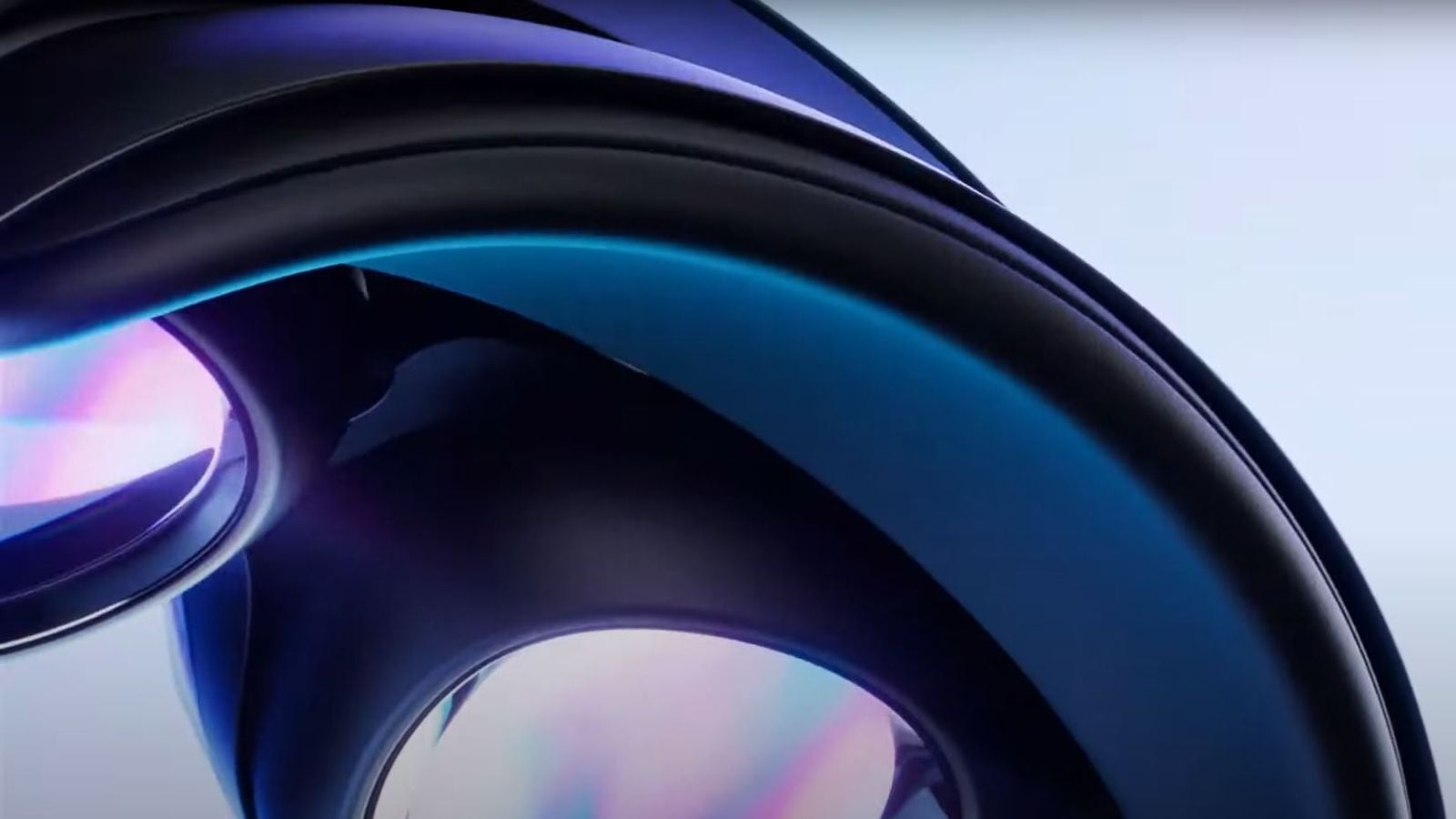
However, you may want to avoid mobile VR headsets that rely entirely on your smartphone to be both the display and the "computer" that runs your VR headset - because the average smartphone doesn't pack a display nearly as sharp, high-res, and with pixels as dense as a dedicated VR headset.
Field of view: The bigger the field of view (FOV), the larger the lenses, and the larger the lenses - the more of your vision they cover. If a VR headset has a small FOV, you may feel like you're wearing goggles and seeing your VR content through them, making immersion a bit harder than it would be on a high-FOV headset. Nevertheless, your brain can adapt to even a VR headset with a lower FOV (such as the Quest 2), so even if its lenses don't fully cover your entire field of view, eventually you won't even notice that.
Refresh rate: Refresh rate refers to how often a VR headset's display refreshes its image per second. On average, you get about 90 Hz, although we do have plenty of options that go up to 120 Hz or more. The faster the refresh rate - the smoother and more immersive your VR content gets, as your brain won't perceive any latency between your head movements and what you're seeing in VR.
Field of view: The bigger the field of view (FOV), the larger the lenses, and the larger the lenses - the more of your vision they cover. If a VR headset has a small FOV, you may feel like you're wearing goggles and seeing your VR content through them, making immersion a bit harder than it would be on a high-FOV headset. Nevertheless, your brain can adapt to even a VR headset with a lower FOV (such as the Quest 2), so even if its lenses don't fully cover your entire field of view, eventually you won't even notice that.
Refresh rate: Refresh rate refers to how often a VR headset's display refreshes its image per second. On average, you get about 90 Hz, although we do have plenty of options that go up to 120 Hz or more. The faster the refresh rate - the smoother and more immersive your VR content gets, as your brain won't perceive any latency between your head movements and what you're seeing in VR.
Of course, getting a higher, smoother refresh rate also depends on how quickly your PC can render a VR game at 120 Hz, which is more power-intensive than rendering it at 90 Hz. So both your headset and your PC should support a higher refresh rate, if that's what you're aiming for; not just the headset itself.
Comfort and fit: All headsets on this list have adjustable IPD and adjustable head straps for the sake of comfort and fit - because obviously, that's extremely important. Even if you won't notice it, you may end up using your VR headset for hours on end, and if it feels loose, or top-heavy, or too tight, or the foam that surrounds the lenses and presses on your face isn't breathable enough, your gaming experience won't be nearly as pleasant.
Comfort and fit: All headsets on this list have adjustable IPD and adjustable head straps for the sake of comfort and fit - because obviously, that's extremely important. Even if you won't notice it, you may end up using your VR headset for hours on end, and if it feels loose, or top-heavy, or too tight, or the foam that surrounds the lenses and presses on your face isn't breathable enough, your gaming experience won't be nearly as pleasant.
In addition, headsets on this list have third party head straps available also, so you're free to discover the perfect one for you, to replace the stock one. Some are extra-adjustable, others are extra thin and light for comfy use even if you're lying down - plenty of options out there to help make your experience as comfortable as possible!
Tracking technology: At this point, we have headsets that are capable enough to track your head movements without the need for any extra gadgets, such as the Quest 2. Other headsets, like the Valve Index, will require you to plug in little devices that help it track your movement. Regardless, the tracking technology in all headsets here is pretty similar, and not something you should worry about. As long as a headset can track both your head's position in 3D space, and its rotation, you can be immersed in all of your favorite VR games. And, all on this list can do that.
Controllers: Controllers are an essential part of your VR gaming experience, so they need to be comfortable and durable, because you're likely to smack them against a wall on accident at some point in your life. Luckily, all on this list are extremely reliable and have similar features. The one thing that may be of interest to you, and you may want to consider, is that some controllers, usually the ones that come with cheaper headsets, run on AA batteries and you'll have to change those periodically.
Tracking technology: At this point, we have headsets that are capable enough to track your head movements without the need for any extra gadgets, such as the Quest 2. Other headsets, like the Valve Index, will require you to plug in little devices that help it track your movement. Regardless, the tracking technology in all headsets here is pretty similar, and not something you should worry about. As long as a headset can track both your head's position in 3D space, and its rotation, you can be immersed in all of your favorite VR games. And, all on this list can do that.
Controllers: Controllers are an essential part of your VR gaming experience, so they need to be comfortable and durable, because you're likely to smack them against a wall on accident at some point in your life. Luckily, all on this list are extremely reliable and have similar features. The one thing that may be of interest to you, and you may want to consider, is that some controllers, usually the ones that come with cheaper headsets, run on AA batteries and you'll have to change those periodically.
Other controllers, usually in more expensive VR headsets like the Valve Index, are rechargeable via USB Type-C, just like your smartphone, so you won't need to buy batteries for those regularly, but still - charging them one way or another is inevitable.
Weight: We've included the weight of each headset here for good reason - weight adds (or reduces the) comfort to your VR gaming experience, and over time - it'll start to matter, even if you don't notice how heavy your headset is at first.
Weight: We've included the weight of each headset here for good reason - weight adds (or reduces the) comfort to your VR gaming experience, and over time - it'll start to matter, even if you don't notice how heavy your headset is at first.
All headsets on this list have obviously be designed to be worn for hours on end without causing fatigue, but you know yourself best - and if you believe it necessary - you may want to consider a lighter headset.
Available apps and games: You can't be sure that all VR games you may want to play, or all VR apps you may want to use, will be available and compatible with your chosen VR headset, until you check their individual requirements.
If you're buying a PC-tethered headset, it's a good idea to first check the Steam pages of any VR games you plan on playing on it, as those pages also list which VR headsets are supported by the game.
But overall, buying a PC-tethered VR headset means you'll get a massive library of games and apps to choose from, not just on Steam, but on other platforms that offer VR content. Things are a bit more limited on non-PC VR headsets, though...
Getting a console-based VR headset like the PS VR2 obviously means you'll be limited to only VR games made for the PlayStation 5, of which there are about 30 right now.
Last, but definitely not least - you should consider what apps and games standalone VR headsets have. The Oculus Quest 2 is the most popular example in this category, and it does have an impressive one. As the Quest 2 runs Android and has its own app store, and Meta has been building it for a while, you'll likely find most big-name VR games, both single player and multiplayer, to be available - from Beat Saber, through Gorilla Tag, Superhot VR and many more.
The Quest 2 also has countless apps - video players, web browsers, Netflix, YouTube VR, even productivity ones. And since the Quest 2 can also optionally tether to your PC for PC VR gaming - you also get that huge library of SteamVR games, among many others, as even those normally support the Quest 2.
All in all, you only need to be careful if you decide to buy a more niche VR headset from a lesser-known brand, as such headsets are less likely to be supported by most VR games, and even if they're standalone headsets with their own libraries - those are not going to have anywhere near the available apps and games as the headsets on this list.
What types of XR headsets are there?
So, XR (or MR) stands for mixed-reality, which includes both VR and AR in itself, but keep in mind: not all VR headsets offer AR capabilities, and vice-versa.
Right now you'll most often find three types of headsets - the first one are tethered VR headsets, meaning it needs to be connected to PC or a gaming console to work. If you're buying a headset that needs to be tethered to a PC, you also have to keep in mind that your PC should be powerful enough (some manufacturers call it "VR ready") to run certain, heavier games in VR.
Gaming console VR headsets, as the name suggest, connect to a specific console and work with no issues, with the most notable example being PlayStation VR. That one works with both PlayStation 4 and PlayStation 5.
After that we have standalone VR headsets, with the most notable example being the Meta Quest 2 (although it can also optionally tether to a PC). Those headsets have their own operating system (normally Android, same as on most phones), their own stores for buying games and apps, and a built-in battery for playing them without any cables attached. While this all sounds like a benefit, standalone headsets are usually not very powerful, and are incapable of running triple-A games (Skyrim VR, Half-Life: Alyx, etc), as a headset tethered to your PC can, so that's something to keep in mind. Unless - again, they have an optional tethering mode, like the aforementioned Quest 2.
Lastly we have mobile VR headsets, which are hardly in the same ballpark as the rest. Mobile VR headsets are simple plastic (or even cardboard) shells with lenses, and occasionally a physical button for interaction, that rely on your smartphone for everything. They're designed with a compartment for it, and your phone is meant to act act as the VR display. While some VR games and apps are still available for phones, and mobile VR headsets had a brief moment of popularity, they're just a simple novelty nowadays, and definitely not something you'll want to invest in nowadays, and we haven't included any on this list.
How do we test VR headsets?
We test headsets while keeping important factors, such as their ease-of-use, price, image quality, library of available games, and more, in order to recommend you the best options. We also take their availability in consideration, making sure you can get the headset that you choose, regardless of where you are in the world.
In addition, we consider versatility, as the more versatile a headset is - the more likely we'll recommend it to you, which is why the Quest 2 is currently our #1 pick. You can do the most with it, and use it in different ways (e.g. both standalone and tethered to a PC).
What is field of view and why it's important when choosing a VR headset?
What is field of view and why it's important when choosing a VR headset?
Field of view (FOV) refers to how much of the virtual world you get to see when you wear a headset. The bigger a headset's FOV is, the bigger its lenses are, covering a larger field of your view, and immersing you more into your games or other VR content.
Larger FOV is usually reserved for the more expensive headsets, but the good news is, even one, such as the Quest 2 with its ~89-degree FOV, can immerse you perfectly well. Although it doesn't cover what your eyes fully see nearly completely, your brain eventually learns to ignore the black space beyond what the lenses show you.
Obviously, if you can afford a more expensive headset with a higher FOV, you'll likely feel a greater sense of immersion, but realistically, most headsets don't go that much beyond what the budget Quest 2 offers, so FOV shouldn't be a main priority when choosing one.
What is IPD and why is it so important?
IPD stands for IPD (Inter Pupillary Distance), and basically means the distance between the centers of your eyes. As VR headsets have two lenses, one to rest over each of your eyes, those lenses need to be the same distance apart from each other as your eyes are, to give you a perfect VR experience.
While the headsets on this list all have adjustable IPD modes, you need to make sure that they can match, or at least get very close to your personal IPD, in order to have a comfortable, clear VR gaming experience, without eye fatigue.
If your IPD is out of your VR headset's range, you may see a blurry image, and you'll find it more difficult to focus on the VR content. That's why you need to do your IPD research before making a VR headset purchase. And that's why, to help you, we've included the IPD range of each headset here. You just need to measure your personal IPD and make sure it's within the supported IPD range for your chosen headset.
What is refresh rate and does it really matter?
A VR headset's refresh rate refers to how often the headset's display/s refresh in a second. The faster the refresh rate - the smoother and more natural your VR gaming experience will feel, while slower refresh rate may cause dizziness in some people, as the brain can have a hard time believing the image it's seeing is real when it's lagging behind your head's movement.
Realistically, any VR headset with refresh rate of 90 Hz or above will feel natural and comfortable for most people, so you needn't obsess too much on the refresh rate, or necessarily aim to spend more on a headset with 120 Hz or faster speeds, although if you can - it could make a difference. With that in mind, VR headsets with faster refresh rate also require a faster gaming PC that can handle it, so that's something else to consider.
While your computer may have no problem rendering a game in VR at 90 Hz, 120 Hz or faster could be a bit too much work for it, if it's not powerful enough.
But again, any VR headset at 90 Hz or faster should be more than enough for most users, and all the headsets on this list can go beyond that.


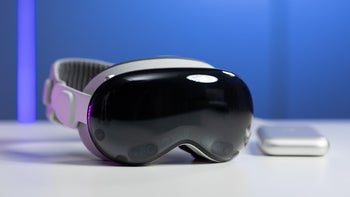

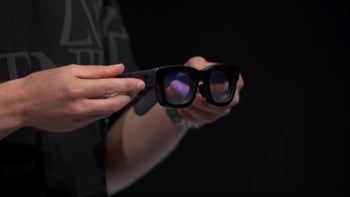
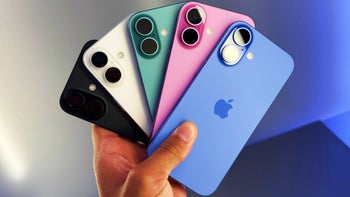

Things that are NOT allowed: